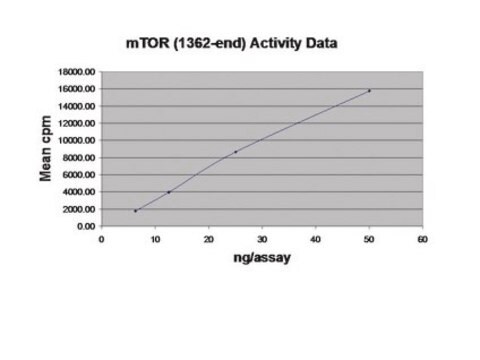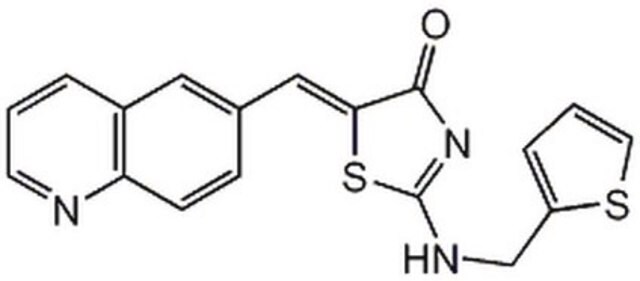SRP0364
mTOR/Raptor/MLST8 human
recombinant, expressed in baculovirus infected Sf9 cells, ≥50% (SDS-PAGE)
About This Item
Produits recommandés
Source biologique
human
Produit recombinant
expressed in baculovirus infected Sf9 cells
Essai
≥50% (SDS-PAGE)
Forme
aqueous solution
Poids mol.
137 kDa (mTOR)
150 kDa (Raptor)
37 kDa (MLST8)
Conditionnement
pkg of 10 μg
Fabricant/nom de marque
Sigma-Aldrich
Technique(s)
cell based assay: suitable
Solubilité
water: soluble
Numéro d'accès NCBI
Application(s)
life science and biopharma
Conditions d'expédition
dry ice
Température de stockage
−70°C
Informations sur le gène
human ... MLST8(64223) , MTOR(2475) , RPTOR(57521)
Description générale
Application
Actions biochimiques/physiologiques
Code de la classe de stockage
10 - Combustible liquids
Classe de danger pour l'eau (WGK)
WGK 3
Point d'éclair (°F)
Not applicable
Point d'éclair (°C)
Not applicable
Faites votre choix parmi les versions les plus récentes :
Certificats d'analyse (COA)
Vous ne trouvez pas la bonne version ?
Si vous avez besoin d'une version particulière, vous pouvez rechercher un certificat spécifique par le numéro de lot.
Déjà en possession de ce produit ?
Retrouvez la documentation relative aux produits que vous avez récemment achetés dans la Bibliothèque de documents.
Notre équipe de scientifiques dispose d'une expérience dans tous les secteurs de la recherche, notamment en sciences de la vie, science des matériaux, synthèse chimique, chromatographie, analyse et dans de nombreux autres domaines..
Contacter notre Service technique








